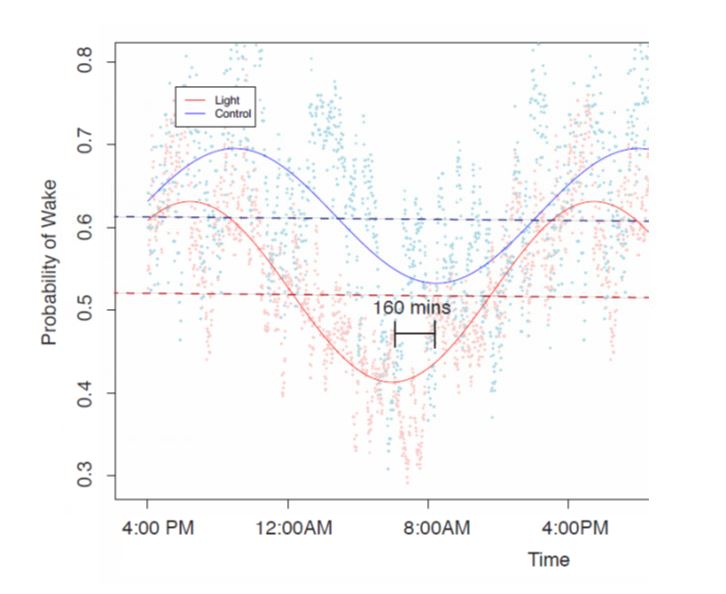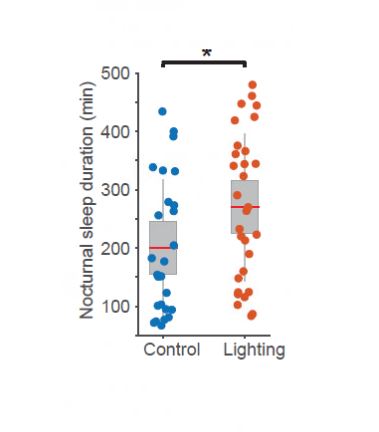Background: Poor sleep is common in hospitalized patients due to multiple factors, including disruption of the circadian rhythm. Greater exposure to natural light for hospitalized patients has been associated with improved outcomes, including increased survival in acute myocardial infarction. Few studies have examined programmable artificial lighting systems in hospital patient rooms, and few have achieved meaningful improvement in sleep. A study of hospitalized patients found that lighting programmed to provide gradual changes in luminance and two hours of blue-enriched light increased sleep by six minutes per day. We sought to determine how a novel dynamic lighting system affects sleep timing and duration compared to standard hospital lighting.
Methods: Patients were admitted to a two-bedded room on a cardiology unit with programmed lighting or concurrently to an adjacent two-bedded room with standard lighting. The programmed lighting system delivered blue-enriched light during the day, a melanopic stimulus twice daily, and blue-depleted light in the evening. Sleep/wake probability was measured in 30-second epochs using mattress sensors to capture sleep timing and nocturnal sleep duration. Subjective sleep duration and alertness were assessed with sleep diaries and the Karolinska Sleepiness Scale (KSS), respectively.
Results: A total of 110 patients were approached and 87 consented to enrollment, including 42 in the intervention group and 45 in the control group. The mean age was 66.3 years and 50.6% were female. The two groups were similar for most baseline variables, with the exception that more patients in the intervention arm had diabetes (59.5% vs 31.1%, p=.01) and chronic kidney disease (47.6% vs 24.4%, p=.02). Overnight sleep duration (11pm-7am) was 69 minutes greater for subjects admitted to the programmable lighting room (270 vs 201 minutes, p<.05). Subjects in the programmable lighting room demonstrated advanced rest/wake activity phase by 160 minutes (p<.01) and overall greater sleep probability (p<.01). Patients in the programmable lighting group reported higher levels of alertness during the day (KSS score 3.8 vs 4.9, p=.01) and evening (5.4 vs. 7.1, p=.01).
Conclusions: A lighting system programmed to entrain the circadian rhythm and provide a daytime melanopic stimulus on a hospital unit was associated with increased nocturnal sleep duration, advanced circadian phase, and increased perceived morning and evening alertness compared to standard hospital lighting. These results suggest that dynamic lighting systems have the potential to improve sleep for hospitalized patients. Future studies should assess if increased sleep through programmed lighting translates into other meaningful outcomes, such as decreased delirium and length of stay.


